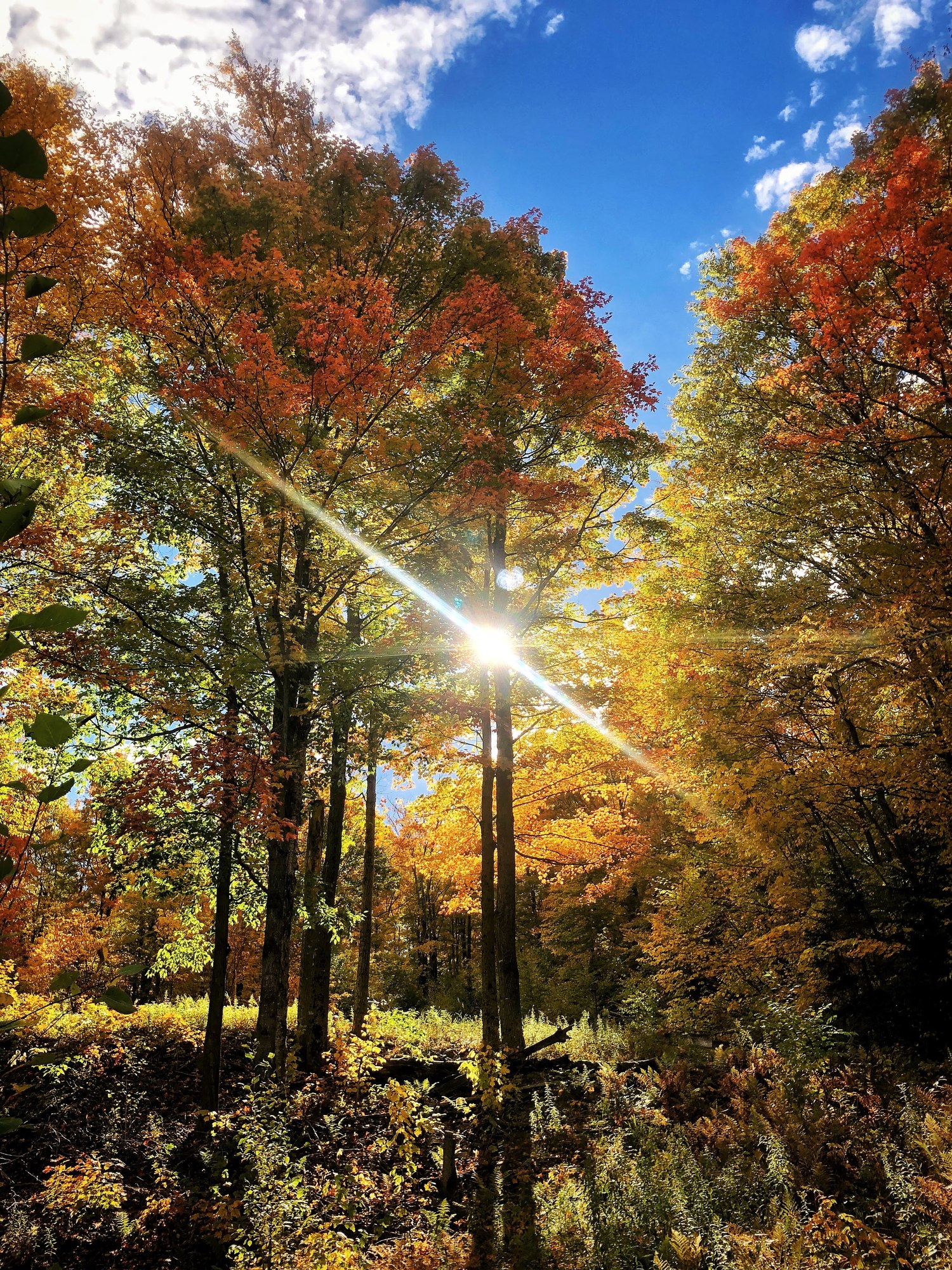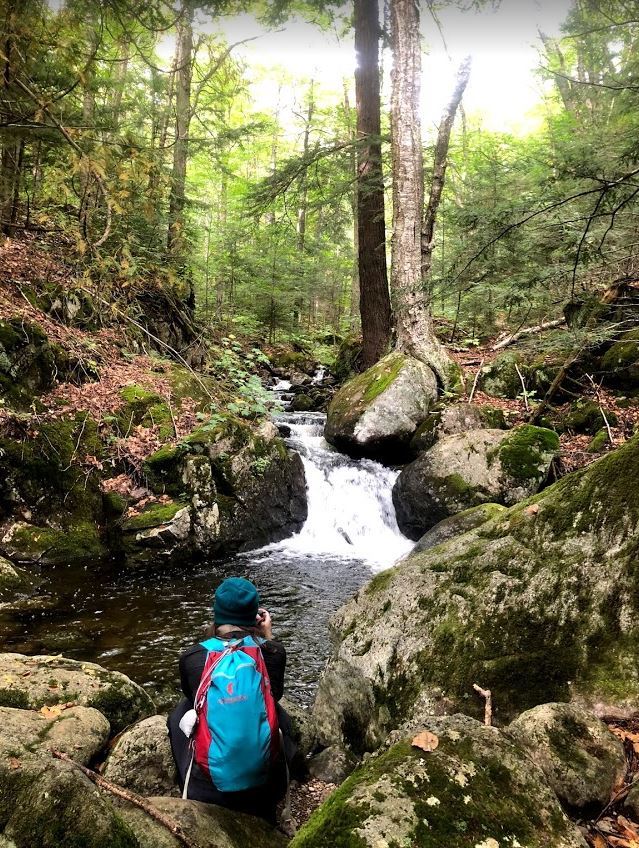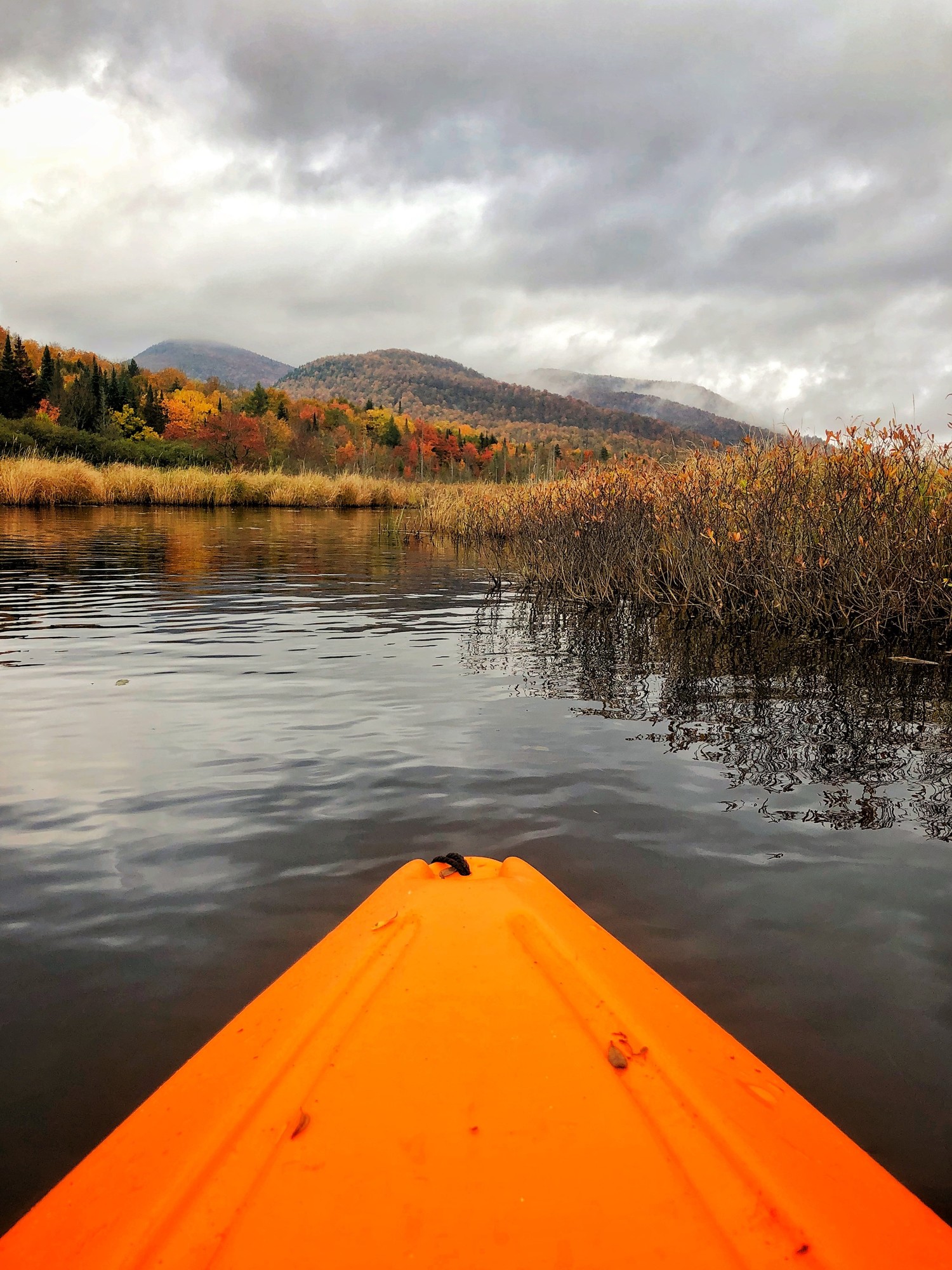|
Have a safe and enjoyable outdoor recreational experience on the lands and waters of the Adirondacks. Properly plan and prepare for your outdoor adventure. Minimize the impact on the mountains and forests, rivers and brooks, ponds and lakes, and the wildlife of the Adirondacks.
Check the Backcountry Information for the Adirondacks web pages for more detailed information on access, outdoor recreation infrastructure, and conditions for those planning to recreate in the Adirondacks. This bulletin provides only the most recent notices.
Emergency Situations: If you get lost or injured; keep calm and stay put. If you have cell service, call the DEC Forest Ranger Emergency Dispatch, 518-891-0235.
More information on hiking safety and what to pack.
Plan
Weather forecasts and conditions can and do change quickly. Check the current National Weather Service Forecast, and be prepared for the forecasted conditions or change your plans.
-
Hunting Season: State lands are shared among all. If you are going for a hike, be sure to wear brightly colored clothing and always dress your dog in orange. Keep dogs on leashes for their safety.

-
Fall Paddling: If you plan to take in the fall scenery on the waterways this fall, remember that the water has cooled significantly. Wear or pack warm layers. Always wear your personal flotation device while on the water this time of year.
-
Research your trip ahead of time: Researching your trip before you go allows you to have better knowledge of the time it will take you to complete the trip. This helps you to better plan your start time to ensure you’re safely back before dark and that you have the proper equipment for the time you will be out recreating. Researching also gives you an idea of milestones such as junctions or specific markers along the trip to keep a look out for to ensure you are staying on track.
Prepare
Properly prepare to better ensure a safe and enjoyable recreation experience.
-
Layers, layers, layers! Prepare for much colder summits and exposed areas this time of year. Have extra warm layers, wool socks, hats, and gloves with you always.
-
Hunters, hikers, paddlers, and beyond: Keep an emergency essentials kit with you. This should be tailored to what you are doing, but a few things to include are; a pocket knife, duct tape to patch ripped jackets, a headlamp for unexpected trips out in the dark or overnight stays, extra batteries, space blanket, emergency whistle, first aid kit, fire making tools, extra layers, wool socks, and snacks.
-
Campers: The ground is getting colder with the dropping temperatures. It’s time to start using sleeping pads and cold temperature rated sleeping bags. For extra warmth, try filling up a Nalgene water bottle with hot water right before bed and tucking it in your sleeping bag overnight.
Practice Leave No Trace
 Follow proper trail etiquette to maintain minimal impact on the environment and the natural resources of the Adirondacks, as well as ensure an enjoyable outdoor experience for all visitors by following the Seven Principles of Leave No Trace. Follow proper trail etiquette to maintain minimal impact on the environment and the natural resources of the Adirondacks, as well as ensure an enjoyable outdoor experience for all visitors by following the Seven Principles of Leave No Trace.
Seven Principles of Leave No Trace
- Plan Ahead and Prepare
- Travel and Camp on Durable Surfaces
- Dispose of Waste Properly
- Leave What You Find
- Minimize Campfire Impacts
- Respect Wildlife
- Be Considerate of Other Visitors
General Conditions/Notices
Learn the conditions you will encounter from Adirondack Backcountry Information.
All
-
Watch for Moose: Motorists should be aware that moose are rutting this time of year. Moose will be wandering around looking for mates and walking into roads without paying attention to vehicles. Four moose-vehicle collisions occurred during a recent three-day period. Take precautions to avoid colliding with moose.

-
Fall Foliage: Leaves have changed throughout the Adirondacks. I Love NY Fall Foliage Report.
-
Fall Weather: Temperatures are cooler and days are shorter.
- The sun sets earlier and rises later – carry a flashlight or headlamp.
- Dress in layers of non-cotton, wicking fabric, and pack extra clothing.
- Those hiking to the higher summits should also pack a winter hat and gloves.
-
Hunting Season: Some big game, small game and waterfowl hunting seasons are open and others will open soon. Hikers should be aware that they may meet hunters bearing firearms or archery equipment while hiking on trails. Please recognize that these are fellow outdoor recreationists with the legal right to participate in these activities on Forest Preserve and Conservation Easement lands. Hunting accidents involving non-hunters are extremely rare - hikers can wear bright colors if it makes them feel safer.
-
Fire Danger Rating: Low. Check the current fire danger map. DEC forest rangers have responded to several wildland fires started by unattended or improperly extinguished campfires. Be safe with campfires.
Hikers and Campers
-
Trail Conditions: Recent heavy rains have resulted in wet and muddy trails – especially in low spots, along water bodies, and in drainages. Avoid damaging hiking trails, trail side vegetation and habitats.
- Wear water-resistant hiking boots and let them get muddy.
- Stay in the center of trails and walk through mud and water.
-
Blowdown: Blowdown (fallen trees, limbs and branches) may be present on trails. Be prepared for hikes to take longer than planned and to bushwhack around blowdown or turn back if blowdown is heavy.
-
Stream Crossings: Use caution around steep, shallow, rocky streams and rivers. These are considered “flashy”, meaning water levels can rise quickly after heavy rainfall. Water levels will also drop quickly after the rains have stopped.
-
Mountain Summits: Temperatures will be much cooler and winds will be stronger. Check the National Weather Service Mountain Point Forecasts for selected summits.
-
Nuisance Bears: Nuisance bear activity has lessened. DEC still recommends following practices to avoid negative encounters with bears in the backcountry and storing all food, toiletries, and garbage in bear-resistant canisters. DEC requires the use of bear resistant canisters by overnight users in the Eastern High Peaks Wilderness through November 30.
Boaters, Paddlers and Anglers
-
Water Temperatures: Water temperatures are cooling. Paddlers and boaters should wear a personal flotation device (PFD, aka life jacket). People immersed in cold waters can lose the ability to think clearly and move quickly after only a short time in the water. Anglers fishing from shore or wading should also wear a PFD.
-
Water Levels: Due to recent rain water, most streams and rivers are at average or above average levels. See the USGS Current Water Data for New York for stream flow of selected waters.
- Boaters and paddlers should be alert for objects on or below the surface that are typically covered by deeper water.
Mountain Bikers
-
Electric bicycles: Electric bicycles (E-bikes) of any class are not allowed on trails or roadways where public motorized access is prohibited.
Recent Notices
Notices below reflect recent changes in conditions and recreation infrastructure work completed by DEC and its partners. Check the Backcountry Information for the Adirondacks for ongoing issues and more detailed information.
-
Saranac Lake Wild Forest: DEC staffing of the Lower and Upper Locks on the Saranac River in the Saranac Chain of Lakes has ended for the season. Boaters can operate the locks using the posted instructions.
-
High Peaks/Sentinel Range Wildernesses: The trails through the Elk Lake Conservation Easement Tract – to Mt. Marcy via Panther Gorge and to Dix Mountain – will be closed to public use for the duration of the big game hunting season beginning Saturday, October 20. The trails will reopen for public use on December 3.
-
Boreas Ponds/Vanderwhacker Wild Forest: Currently there are no designated tent sites on these lands - roadside or truck camping is not available at this time.
-
Silver Lake Wilderness: DEC has completed construction of a new paddlers' take-out site along the West Branch Sacandaga River on the Shaker Place Conservation Easement along State Route 10. The new access provides a safer and more user-friendly experience.
-
West Canada Lake Wilderness: A broken foot bridge spanning Lamphere Brook on the Northville-Placid Trail was recently replaced with a new 35-foot bridge.
- State Police Aviation and DEC Forest Rangers transported materials for the bridge to the remote stream crossing by helicopter in Spring of 2018.

- A Student Conservation Association Adirondack Corps crew completed the bridge replacement this Fall.
- The bridge was fully replaced using treated poles and lumber for strength and longevity.
-
Essex Chain Lakes Complex: Gates have been open on two roads providing hunters and others motor vehicle access to additional lands and roadside primitive tent sites.
- Camp Six Road has three roadside primitive tent sites and a parking lot at the end - one mile from the Chain Lakes North Road.
- The gate at the Outer Gooley Club on the Chain Lakes Road South is open providing access to three primitive tent sites and a parking area 1.5 miles beyond the gate. Two additional tent sites are located past the gate at the seasonal parking area - one further north on the Chain Lakes Road South and one at Pine Lake.
-
Shaker Mountain Wild Forest: DEC staff constructed a new lean-to along the Northville-Placid Trail just north of the West Stony Creek crossing.
-
Moose River Plains Wild Forest: Lean2Rescue has completed three projects on Eighth Lake during the past several weeks.
- Dunning Lean-to located on the northern shore of the lake has been completely rehabilitated. Volunteers with the organization replaced the roof, the floor and select logs that were in poor condition. They all stained the lean-to.
- The "Double-wide Lean-to” on the western shore of Eighth Lake has been completely rehabilitated. The four base logs, the floor and the roof were all replaced, and the lean-to was stained.
- Earlier this summer the lean-to located on a small island near the western shore of Eighth Lake was removed. Due to the small size of the island, it cannot sustain camping. The site has been converted into a day use site. (9/21)
Highlighted Paddle- Kunjamuk River, Speculator, NY
The village of Speculator hand launch site on the Sacandaga River is located at the Speculator Ball Field Parking Area. Paddlers can access paddle routes on both the Sacandaga River and Kunjamuk River. The Kunjamuk Hand Launch on the Pine Lakes Road provides paddlers direct access to the Kunjamuk River. Ball Field Parking Area. Paddlers can access paddle routes on both the Sacandaga River and Kunjamuk River. The Kunjamuk Hand Launch on the Pine Lakes Road provides paddlers direct access to the Kunjamuk River.
It is approximately 1.5 miles down the Sacandaga River to the mouth of the Kunjamuk River. Almost 4 miles up the Kunjamuk is Elm Lake. A paddle to the north side of Elm Lake and back to the launch site makes this a 12-mile round trip. Paddlers will need to portage over or around beaver dams and other obstacles. The Kunjamuk River is a calm, meandering paddle with stunning scenery.
Speculator Ball Field Parking Area located off State Route 30/8 across from the public beach on Lake Pleasant has a hand launch site. (43.4961°N, 74.3595°W).
*Watch the highlight video on Facebook.
|



 Follow proper trail etiquette to maintain minimal impact on the environment and the natural resources of the Adirondacks, as well as ensure an enjoyable outdoor experience for all visitors by following the
Follow proper trail etiquette to maintain minimal impact on the environment and the natural resources of the Adirondacks, as well as ensure an enjoyable outdoor experience for all visitors by following the 

 Ball Field Parking Area. Paddlers can access paddle routes on both the Sacandaga River and Kunjamuk River. The Kunjamuk Hand Launch on the Pine Lakes Road provides paddlers direct access to the Kunjamuk River.
Ball Field Parking Area. Paddlers can access paddle routes on both the Sacandaga River and Kunjamuk River. The Kunjamuk Hand Launch on the Pine Lakes Road provides paddlers direct access to the Kunjamuk River.